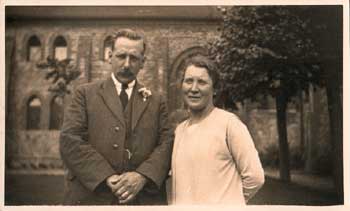|
|
||||||||||||||||
 |
||||||||||||||||
|
|
||||||||||||||||
|
|
||||||||||||||||
| The fire burned fiercely because of the large amount of timber in the roof. The fire brigades were handicapped in fighting the fire because of insufficient force of water being obtained. This is where the Wolverton Works brigade helped by laying over 40 lengths of hose into the River Ouse. It was also reported that at the height of the fire, flames could be seen over a two mile radius. Luckily there was no wind that night, otherwise other buildings may well have caught alight as well. The damage to the home was reported to be between £4,000 and £6,000. One classroom was completely gutted, and the roof of the dormitory collapsed. The games room, which held the boys’ model trains and railway, was also destroyed. Extensive damage was also caused to the boilers, kitchen and - sadly for the boys at the home - a large quantity of their clothing was also destroyed. |
||||||||||||||||
 |
||||||||||||||||
| The Superintendent of the home at the time, Mr. N.E. Bennett (pictured left) , worked alongside hundreds of people who came to aid him and Mr. Moffatt in their attempt to save beds and bedding from the dormitories. A human chain was formed to pass as much as possible to the home’s hospital. |
||||||||||||||||
| When the extent of the damage was known, Wolverton railway works, which at the time employed 7,000 men, had a voluntary collection among its workers and managed to raise a considerable amount towards the repair of the buildings.
The timing of the fire was fortunate in that had the fire started an hour later the position would have been grave as the boys would have been in bed. |
||||||||||||||||
| Previous page | ||||||||||||||||
| Read about one of the pupils at St. Paul's School
When the building was used by Fegan's Homes for Boys |
||||||||||||||||